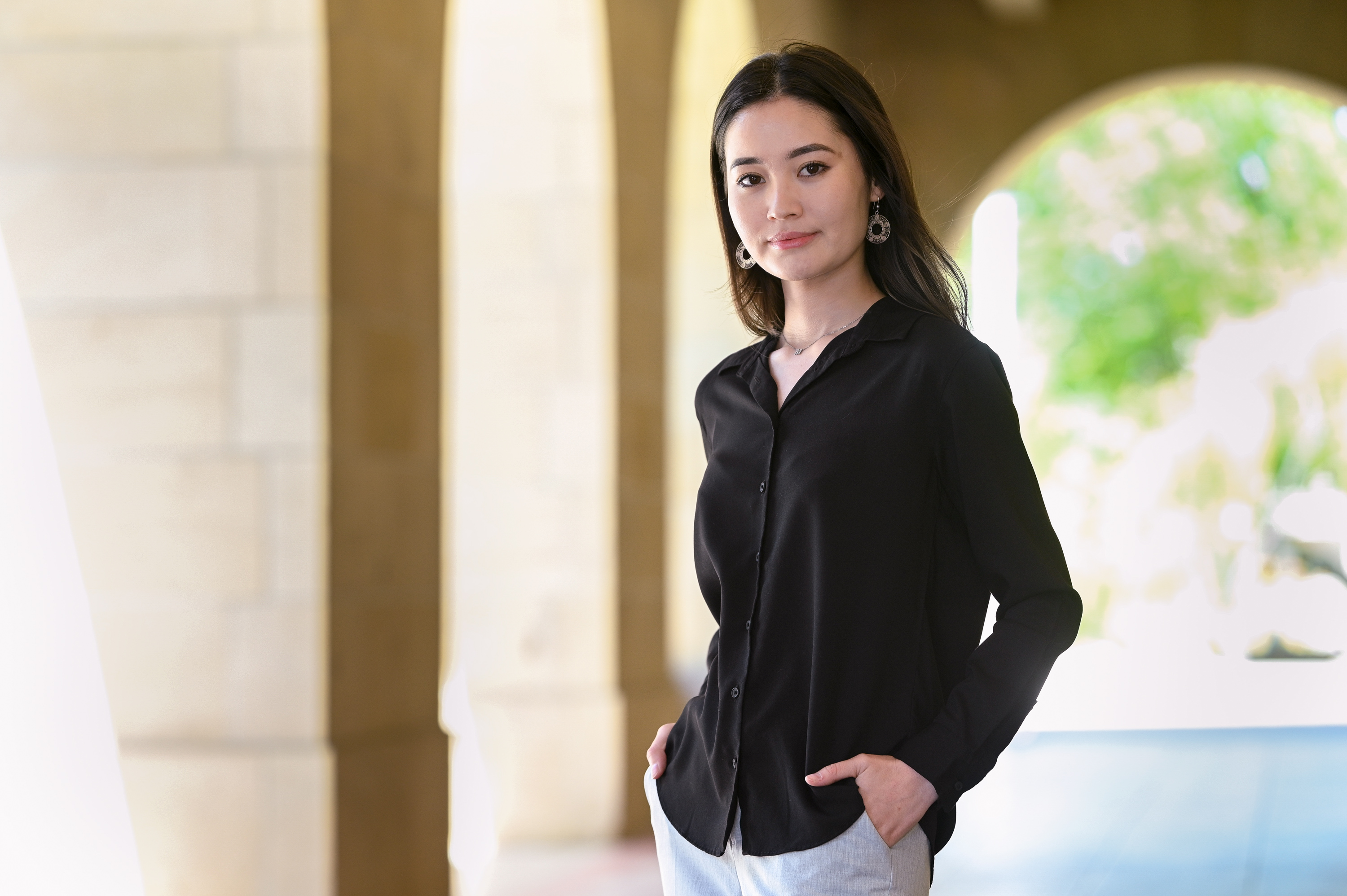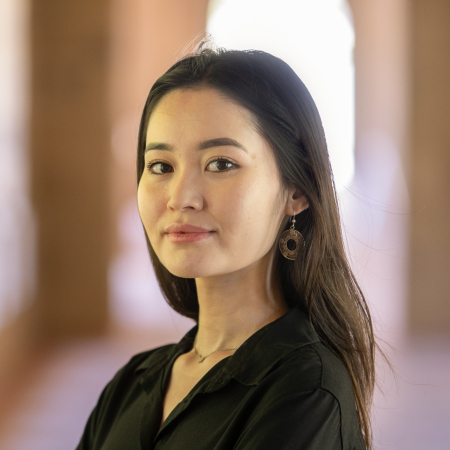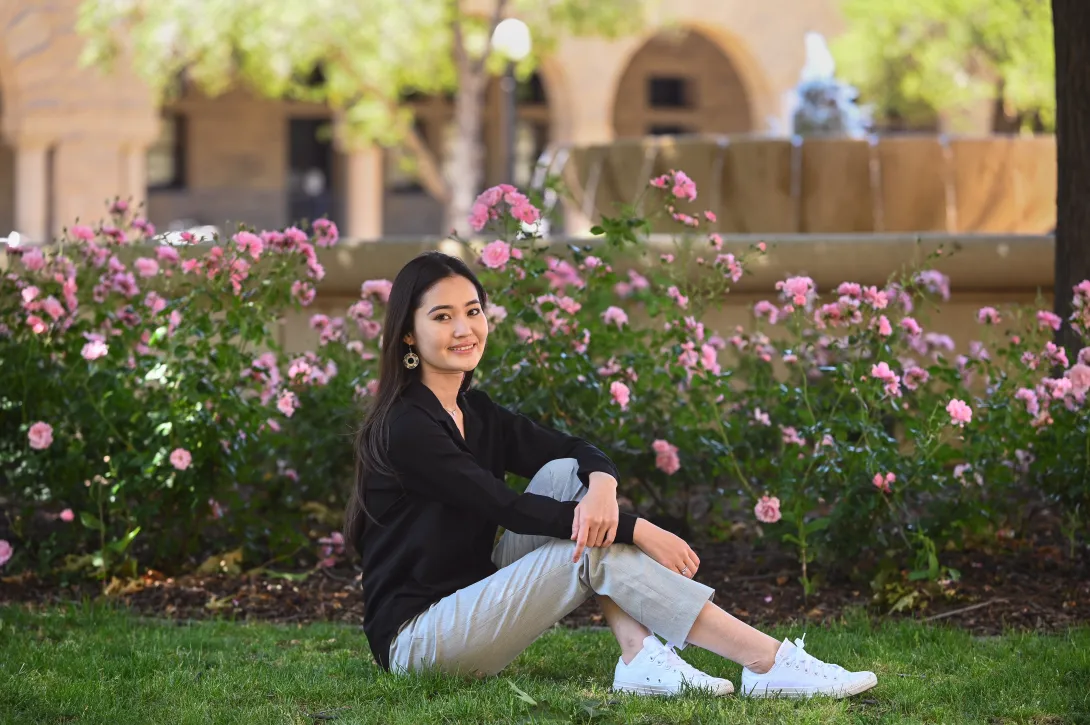
Malika Kanatbek
Describe LDT.
I would describe LDT as “fast and furious” because it is an insanely intense and exhausting program. However, the growth that you feel by the end of the year is tangible. You learn so much, beginning with qualitative research methodologies and progressing through your own educational project. I cannot imagine myself in any other program because LDT combines everything that I love—learning, design, and technology.
Is there some time that you’ve spent with a member of the GSE faculty that is memorable?
Twice in a quarter I participate in the Dean's Fellows luncheon with GSE faculty and staff, since I am a Dean’s Fellowship recipient. I remember during the first quarter we had lunch with Dan Schwartz where he shared about his experience and work. By the end of this memorable conversation, I requested his autograph on his book The ABCs of How We Learn. He wrote wonderful things and suggested that I read Chapter Z, since it would be important for me. So, go get this book and see what he recommended to me!
Why Stanford?
I've always wanted to study at Stanford, but I couldn't find a suitable program. The day I discovered LDT I opened the application form and began filling it out.
How would you describe the other students in your cohort?
The most fascinating thing about my cohort is that it is very diverse in terms of age, experience, and background. There are people who have teaching experience but know nothing about technologies, or those who are entrepreneurs, designers, writers, or parents of a special-needs child. I believe that this diversity makes the LDT cohort very cooperative rather than competitive. I'm not afraid to seek guidance or help if I'm perplexed on anything. I love my cohort for always supporting me!
What drew you to education?
After completing my undergraduate degree at American University of Central Asia, I got a job at the Equal Opportunities Social Center (EOSC) for people with disabilities. The main goal of the center is to help people with special needs get employment opportunities through training in white cane orienteering, satellite navigation, and professional computer skills. As a part of a UNICEF project, I developed educational video materials for children with hearing loss and deafness and an interactive book for visually impaired children. However, I realized that those projects would not have long-term effects or improve conditions for equal opportunity. That experience raised my interest in the development of accessible education products for children with disabilities.
What were you doing prior to applying to the GSE?
All my experiences after my undergraduate years helped lead me to the GSE. My job at EOSC helped me to realize existing problems in my country. An internship at the Organization for Security and Co-operation in Europe (OSCE) led me to explore graphic and UX/UI design. That experience led me to a project for the Ministry of Health of Kyrgyzstan—an application that allowed patients to interact with doctors, book appointments, and keep patients’ data and records online. Though this project was not implemented, it helped identify a knowledge gap in user experience research. The final position I held before the start of my master’s degree was communications manager at Chemonics International [an international development firm]. Now I can connect all the dots that brought me to this amazing program.

What are your career plans and goals?
I want to work in the sphere of accessible educational technologies, developing useful tools and resources to help implement and promote accessibility in education. I am also planning to apply for a PhD to continue my research in that sphere.
What advice do you have for students who are trying to decide whether to attend the LDT program?
The LDT program will give you a transformative experience in one year. You can expect to have individual attention from GSE faculty because of the small cohort size. You can work on various real-world projects, spend time in the GSE Makery, connect with the brightest minds in Silicon Valley, and participate in a design challenge to get funding for your project. I could continue listing all the amazing opportunities in this program, but it would get too long.
Any tips for incoming students to help them get the most from their time at Stanford?
I would advise you to choose your courses wisely. Don't attempt to sign up for every subject that interests you; focus on quality rather than quantity. The quarter system is challenging because before you know it, it's the middle of the quarter. Spend time in the GSE Makery! I did not have time to go there during the first quarter because of my workload. However, I compensated during the other two quarters by taking classes in which I could work independently on projects in the Makery.
What do you do to relax and have fun?
Every aspect of my life at Stanford is centered on learning—even my hobbies. I've always wanted to learn how to play the guitar and draw. I learned those things while at Stanford as a way to unwind. Aside from that, I like going to Half Moon Bay to spend time near the ocean. For me, it serves as a reminder of how fortunate I am to witness such beauty.

Photos by Rod Searcey
